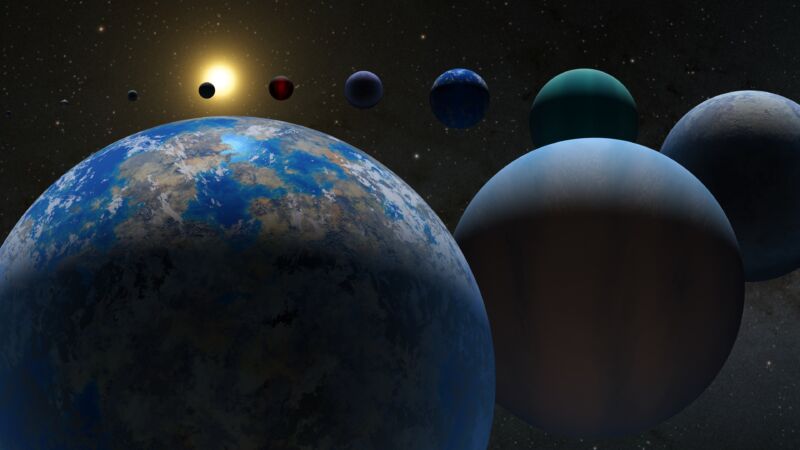What do we need to find if we want to discover another Earth? If an exoplanet is too far away for even the most powerful telescopes to search directly for water or certain biosignatures, is there something else that may tell us about the possibility of habitability? The answer could be carbon dioxide.
Led by Amaury Triaud and Julien de Wit, an international team of researchers is now proposing that the absence of CO2 in a planet’s atmosphere potentially increases the chances of liquid water on its surface. Earth’s own atmosphere is depleted of CO2. Unlike dry Mars and Venus, which have high concentrations of CO2 in their atmospheres, oceans on our planet have taken immense amounts of carbon dioxide out of the atmosphere because the gas dissolves in water. CO2 deficits in exoplanet atmospheres might mean the same.
Another molecule could be a sign of a habitable planet: ozone. Many organisms on Earth (especially plants) breathe carbon dioxide and release oxygen. This oxygen reacts with sunlight and becomes O3, or ozone, which is easier to detect than atmospheric oxygen. The presence of ozone and the absence of carbon dioxide could mean a habitable, and even inhabited, planet.
Anyone—or anything—out there?
There is a difference between a planet orbiting within what is considered a habitable zone and actual habitability. Habitability is defined by the researchers as “a planet’s capacity to retain large reservoirs of surface liquid water,” as they state in a study recently published in Nature Astronomy.
Proving that water actually exists could hypothetically be done in many ways. The problem is that most existing telescopes, no matter how advanced, are incapable of pulling them all off. Finding liquid water from light years away is not as easy as seeing the glimmer of a lake, though that is possible at short distances, like those within our own Solar System. (When sunlight reflects off a body of surface liquid, what scientists refer to as a “glint” can be seen, which is how the lakes and oceans on Saturn’s moon Titan were discovered.)
Beyond water, other factors could determine habitability. Besides atmospheric properties, these include (but are not limited to) the orbit of a planet, plate tectonics, magnetic fields, and how it is affected by its star.
When less is more
Triaud, de Wit, and their team argue that it’s worth trying to identify potentially habitable planets that belong to a system similar to ours. If there is a system with several terrestrial planets that are close in size and have atmospheres, this makes it possible to compare carbon dioxide content in their atmospheres and see if there is a significant deficit in one or more planets compared to the others.
While a CO2 deficit does not guarantee that there is liquid water on the surface, it should give scientists a reason to observe the planet or planets in question more closely. We don’t have to look far from Earth to see why this makes sense. Not only has most of the carbon dioxide in our planet’s atmosphere been depleted by its oceans, but plate tectonics also bury it in the crust. The amount of early Earth’s atmospheric carbon dioxide that ended up trapped in rocks is almost equal to the amount of CO2 in the entire atmosphere of Venus.
There is another advantage to searching for this deficit. Because it's an especially strong infrared light absorber, CO2 is rather easy to detect. Telescopes that are around today, including NASA’s James Webb Telescope and ESO’s Very Large Telescope, as well as ESO’s upcoming Extremely Large Telescope, have infrared vision that can easily search for CO2 signatures.
So what if we did find a planet that showed a deficit of CO2 and the presence of ozone? The researchers think the combination of both could mean not just a few microbial life forms but, at least hypothetically, a planet alive with organisms.
“Life on Earth is planet-shaping,” the team said in the same study. “Planet-shaping life is really what astronomers are after.”
Nature Astronomy, 2023. DOI: 10.1038/s41550-023-02157-9



3175x175(CURRENT).thumb.jpg.b05acc060982b36f5891ba728e6d953c.jpg)
Recommended Comments
There are no comments to display.
Join the conversation
You can post now and register later. If you have an account, sign in now to post with your account.
Note: Your post will require moderator approval before it will be visible.